 History
History  History
History  Animals
Animals Ten Times It Rained Animals (Yes, Animals)
 Mysteries
Mysteries 10 Devastating Missing Child Cases That Remain Unsolved
 Creepy
Creepy 10 Scary Tales from the Middle Ages That’ll Keep You up at Night
 Humans
Humans 10 One-of-a-kind People the World Said Goodbye to in July 2024
 Movies and TV
Movies and TV 10 Holiday Movies Released at Odd Times of the Year
 Politics
Politics 10 Countries Where Religion and Politics Are Inseparable
 Weird Stuff
Weird Stuff 10 Freaky Times When Famous Body Parts Were Stolen
 Miscellaneous
Miscellaneous 10 Interesting Things Manufacturers Stopped Making and Why
 Gaming
Gaming 10 Funny Tutorials in Games
 History
History 10 Desperate Last Stands That Ended in Victory
 Animals
Animals Ten Times It Rained Animals (Yes, Animals)
 Mysteries
Mysteries 10 Devastating Missing Child Cases That Remain Unsolved
Who's Behind Listverse?

Jamie Frater
Head Editor
Jamie founded Listverse due to an insatiable desire to share fascinating, obscure, and bizarre facts. He has been a guest speaker on numerous national radio and television stations and is a five time published author.
More About Us Creepy
Creepy 10 Scary Tales from the Middle Ages That’ll Keep You up at Night
 Humans
Humans 10 One-of-a-kind People the World Said Goodbye to in July 2024
 Movies and TV
Movies and TV 10 Holiday Movies Released at Odd Times of the Year
 Politics
Politics 10 Countries Where Religion and Politics Are Inseparable
 Weird Stuff
Weird Stuff 10 Freaky Times When Famous Body Parts Were Stolen
 Miscellaneous
Miscellaneous 10 Interesting Things Manufacturers Stopped Making and Why
 Gaming
Gaming 10 Funny Tutorials in Games
Top 10 Harrowing Tales Of People Who Survived Months At Sea
In unfortunate instances, people have found themselves drifting helplessly on the ocean, sometimes on rafts that aren’t more than a few feet long. With limited supplies, they soon run out of food and are left with no other option than feeding on raw birds and fish. Drinking the salty seawater is never an option, so the blood of these animals becomes water. Sometimes, marooned seafarers get lucky, and rain falls, providing them with fresh water.
Having rain falling on you while you’re in a rubber raft in the middle of a stormy sea is counteractive, since the same rain that’s aiding your survival might flood and sink your raft, hastening your demise. Then there’s the unforgiving Sun, the sharks congregating around the raft, and the harsh, salty ocean air that causes painful sores. Tales of surviving several months at sea are rare.
10 Poon Lim
133 Days
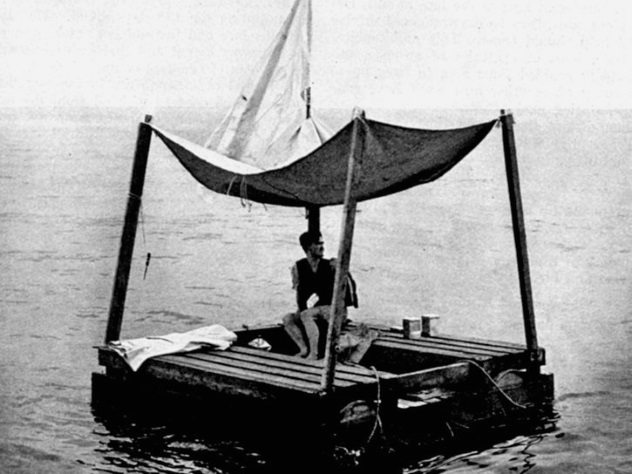
China native Poon Lim was a steward aboard the British merchant ship Ben Lomond when it was torpedoed and sunk by German U-boat U-172 during the afternoon of Nov 23, 1942. The ship sank in two minutes, killing 53 of its 54-man crew. The only survivor was Poon Lim, who remained in the water for two hours until he found a 2.4-meter (8 ft) raft. On board the raft were biscuits, chocolates, sugar, flares, flashlights, smoke pots, and 40 liters (11 gal) of water.
Lim initially lived on the food but soon resorted to catching birds and fish, including sharks. He made an improvised fishhook from a wire and made a knife from the biscuit tin. He drank rainwater captured with the cover he had made for the raft, though he occasionally drank the blood of the birds and fish he killed. He was a bad swimmer, so he tied a rope between his wrist and the raft in case he ever fell into the water.
Poon spent 133 harrowing days at sea before he was found by some Brazilian fishermen. To date, he remains the only person to have spent that many days on a raft. He later got a British Empire Medal from King George VI, and the Royal Navy incorporated his experience into a survival manual for its sailors. He later emigrated to the United States, where he was granted citizenship.[1]
9 Wilbert Widdicombe And Robert Tapscott
70 Days
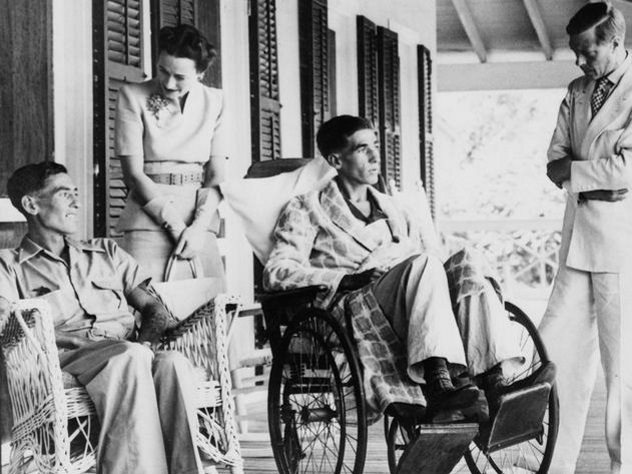
On October 30, 1940, two British sailors, Wilbert Roy Widdicombe and Robert George Tapscott, landed in Eleuthera in the Bahamas after being adrift for 70 days. They had been blackened by the Sun, and their hair had formed into thick clumps. Tapscott was so weak he could no longer walk, and Widdicombe had broken his front teeth when he tried to eat his shoes. The men were the only survivors of the British merchant ship Anglo Saxon, which was torpedoed off the coast of Africa by the German warship Widder in the night of August 21, 1940.
The Widder fired at two life rafts containing survivors, but Widdicombe and Tapscott were among a group of seven men who climbed into a small, quiet boat that did not attract the attention of the Widder. Two of the survivors had been injured by machine gun fire and later died of their injuries. Two more ran mad and jumped overboard, and one cut his throat with a razor. The little food Widdicome and Tapscott had on board lasted for 15 days, and they survived on seaweed and fish for the remaining 55. The also drank the distilled water and alcohol in their compass. Two ships passed by the men during their horrendous journey, but neither spotted them.[2]
8 Jose Salvador Alvarenga
438 Days
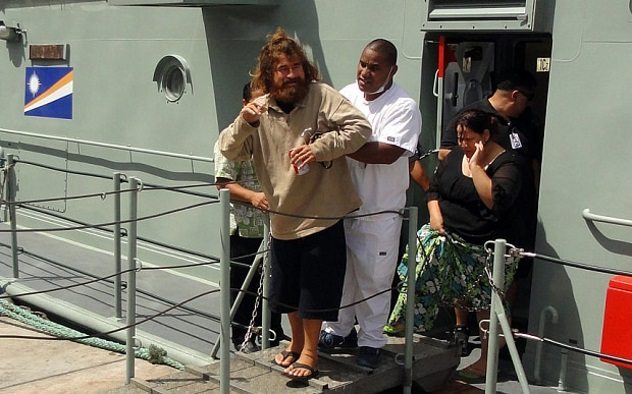
On November 17, 2012, Jose Salvador Alvarenga and Ezequiel Cordoba left the ports of Costa Azul, Mexico, in a 7-meter (23 ft) boat for what was supposed to be a 30-hour fishing trip. Things went south when they ran into 5-meter-high (16 ft) waves and heavy winds exceeding 100 kilometers per hour (60 mph). This continued for five days. By the time it was over, they had lost all their food and equipment, their engine and radio had stopped working, and they were 450 kilometers (280 mi) from Mexico. A two-week search and rescue operation organized by fellow fishermen turned up nothing, and both men were believed to be dead.
The duo suffered on the high seas. Dry air sapped moisture from their bodies, and Cordoba’s lips swelled to twice their size. His skin was also covered with sores caused by salt blocking his pores. They survived on fish and birds, though Cordoba often couldn’t eat the seabirds because they smelled like rotten fish. On one of the few occasions he did, he unknowingly ate part of a sea snake inside the stomach of the bird, and the poisonous meat almost killed him. He refused to eat raw birds after the incident and lived on meals of triggerfish and turtles.
Cordoba started hallucinating by the 23rd day and was asking for oranges. He had lost a lot of weight. He begged Alvarenga not to eat him if he died but instead to tie him to the front of the boat. At one time, he even considered committing suicide by jumping into the shiver of sharks that always congregated around the boat. Cordoba died on the 118th day, and Alvarenga claims he buried him at sea, after talking with the corpse and treating it like it was still alive for a few days.
On January 30, 2014, after 14 months at sea and almost 9,000 kilometers (5,600 mi) away from Mexico, Alvarenga landed in the Marshall Islands. Many doubted his story back in Mexico, but oceanographers and doctors confirmed that it was true. However, that did not stop them from making Alvarenga take a lie detector test.[3] Cordoba’s family later sued Alvarenga for $1 million, claiming he ate the body of their son.
7 Captain Jukichi, Hanbe, And Otokichi
484 Days
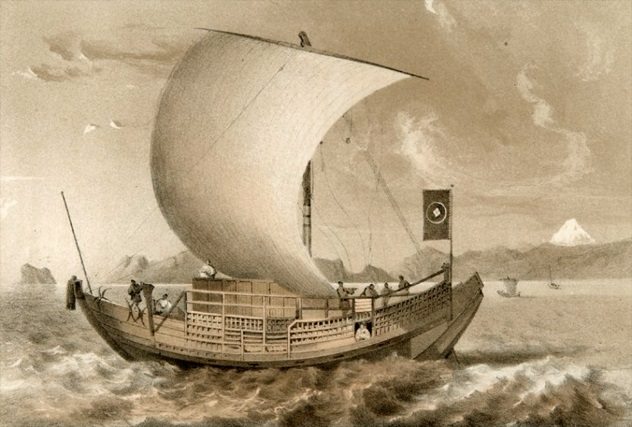
On November 4, 1813, a Japanese ship under the control of Captain Jukichi was hit by a storm off Shizuoka, Japan, as it returned from a trip to Edo (today’s Tokyo). The ship’s helm and mast were destroyed during the storm, leaving it to drift helplessly for 484 days until it was it was rescued in the waters around California on March 24, 1815.
Only three crewmen survived. This included Captain Jukichi and two crewmen: Hanbe and Otokichi. 12 others had died of scurvy. The men had lived on purified seawater and the bags of soybeans they were transporting. In the US, they generated curiosity, since they were the first Japanese people to land on US soil. This was at a time when Japan was a closed and secretive country that did not permit the entry of foreigners.
Hanbe died during the return trip to Japan, leaving only Captain Jukichi and Otokichi as survivors. Captain Jukichi became famous after returning to Japan and was even allowed to take a surname. At that time, only high-class Japanese citizens had surnames.[4] Captain Jukichi Oguri, Otokichi, and Hanbe still hold the world record for the longest time spent adrift at sea.
6 Vidana, Rendon, And Ordonez
285 Days
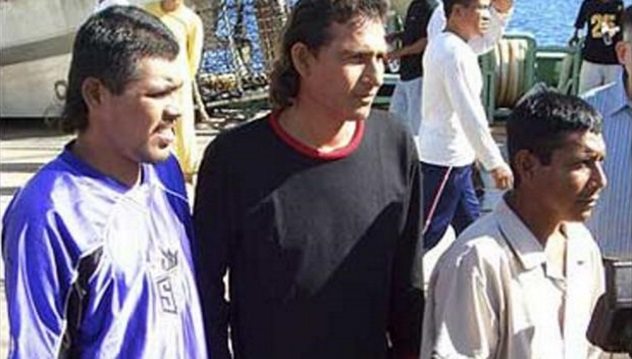
On October 28, 2005, a five-man party left San Blas, Mexico, on a fishing trip. However, they soon ran into problems: One of their engines stopped working, and the other ran out of fuel, leaving them adrift. The men survived on a diet of raw birds and fish, including sharks, which they once caught with their bare hands. They drank rainwater captured in a bucket and fished with an improvised fishhook made from the disabled engine. Two of the fishermen died during the misadventure, as they couldn’t eat raw meat and often turned their backs when the others did.
The boat continued following the ocean current until it was found by a fishing boat near the Marshall Islands on August 8, 2006. Back home, not everyone welcomed the three survivors, Jesus Vidana, Lucio Rendon, and Salvador Ordonez, with open arms. They were accused of eating the bodies of their dead colleagues, since they looked too well-off for people stranded on the high seas for nine months. They were also accused of smuggling cocaine, since San Blas was a known transit point for boats transporting drugs to the US. The men denied both allegations.[5]
5 Maurice And Maralyn Bailey
117 Days

Maurice Bailey and his wife Maralyn were sailing from the United Kingdom to New Zealand when a whale crashed into their yacht just off the coast of Guatemala on March 4, 1973. They quickly inflated a rubber dinghy as their yacht filled with water and dumped anything they could get their hands on into it just before their ship sank. The couple soon ran out of food and started feeding on turtles, birds, and fish.
No one would have known that the couple was in distress if Maralyn hadn’t been sending postcards from every port they visited to her mother. The last postcard arrived in February 1973, when the couple berthed in the Panama Canal. None followed, and Maralyn’s mother realized that something was wrong. The couple passed by several ships, but none saw them. Their dinghy also started showing signs of wear after two months at sea. Its seams were coming apart, and it needed to be constantly inflated.
Then there were the sharks that often swam near the dinghy, as well as two terrible storms. The dinghy even capsized three times. The couple were found by a Korean fishing boat on June 30, 1973, after 117 days at sea. They were sunburned, malnourished, dehydrated, and covered in sores. They were in very bad shape and couldn’t move. Their stomachs had reduced in size so much that they couldn’t eat anything solid for two days.[6]
4 Nalepka, Glennie, Hofman, And Hellriegel
119 Days
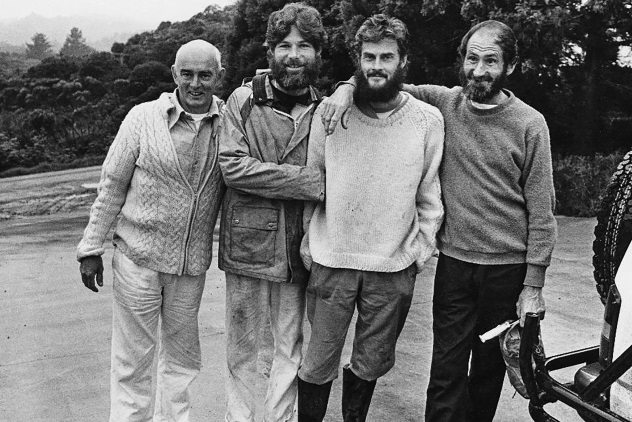
John Glennie, Rick Hellriegel, Jim Nalepka, and Phil Hofman were on board a yacht called the Rose-Noelle when it was overturned by a huge wave around 6:00 AM on June 4, 1989. The four men climbed onto the underside of their upturned yacht and remained there for about four months. New Zealand officials initially organized a search but later called it off because no one knew where the yacht was headed. The New Zealand Water Safety Council listed the men as dead a few months later.
The four men had luck on their side. Judging by ocean currents, they should have have drifted to Chile, but they ended up on Great Barrier Island. New Zealand authorities initially doubted their story, especially since they wore clean clothes and had no sores, contrary to what would be expected of people exposed to the salty ocean air for months. New Zealand Customs suspected that the men might have sailed to South America on a drug run.
Investigations revealed that the yacht had indeed been sailing upside down as the men had claimed. However, they didn’t live on top of the yacht but inside a small corner inside the upturned vessel. They fed on the food supplies on board, which they augmented with fish they caught from the sea. When they reached the shore, they found a small, empty house, where they cleaned up and changed into new clothing.[7]
3 Jennifer Appel And Tasha Fuiava
176 Days
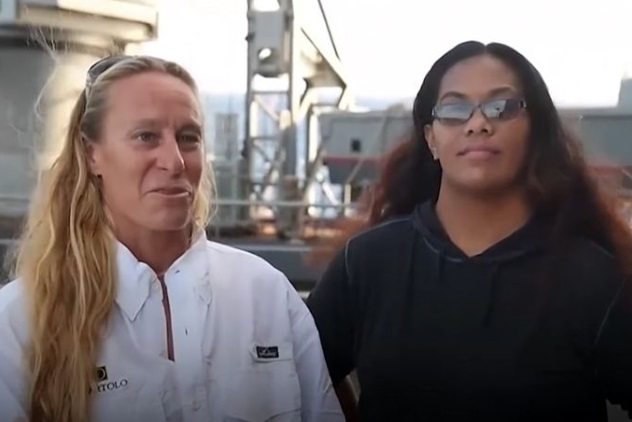
On May 3, 2017, Jennifer Appel and Tasha Fuiava left Honolulu with their two dogs for a trip to Tahiti. The trip that was supposed to take 18 days lasted much longer after the women were supposedly caught in a heavy storm that flooded their engine and set them adrift until they were recovered by the US Navy on October 25. The women immediately attracted bad press after their rescue. Oceanographers doubted that they had encountered a storm, and shark experts questioned their claims of tiger sharks banging on their boats, since tiger sharks do not attack boats.
Coupled with this was the fact that all six communication gadgets on board the boat apparently mysteriously stopped working, and the ladies did not switch on the Emergency Position-Indicating Radio Beacon (EPIRB), which would have alerted rescuers to their location. Appel said they did not switch the EPIRB on because they had enough food and did not think they were in danger, even though she feared that they might die. She believed they would definitely land somewhere and decided to enjoy the adventure. The two women would later change their story and claim that a Taiwanese fishing boat had rammed them, and its crew had tried to kill them.
Appel’s problems compounded when a tabloid published some of her nude pictures from ten years earlier. She also couldn’t get insurance on the boat, since it had sailed more than 640 kilometers (400 mi) from shore, which was outside the range where it qualified for insurance. As if things weren’t bad enough, her family refused to talk to her.[8]
2 William And Simonne Butler
66 Days
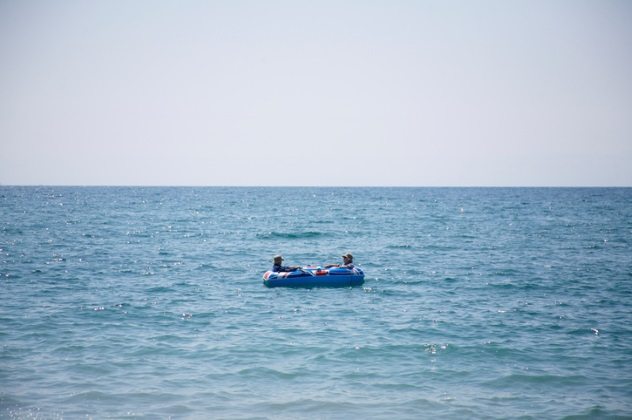
William and Simonne Butler were attempting to travel around the world when their sailing boat ran into a pod of whales roughly 2,200 kilometers (1,400 mi) from Panama during the night of June 15, 1989. According to Williams, the whales numbered between 200 and 500. One of the whales rammed into the side of their boat, and it started sinking fast. 15 minutes later, it was underwater, and the couple were on a rubber raft.
All the couple had on board were a knife, a water desalinator, a fishhook, a flashlight, two blankets, three flares, 38 liters (10 gal) of water, and a Sony Walkman. The Walkman picked up radio stations from Los Angeles, Texas, Guatemala, Costa Rica, and Panama as they drifted on the ocean. However, help was far. They ran out of food in four weeks and turned to eating turtles and triggerfish.
Unfortunately, sharks were always coming for the fish hiding under their raft. At one point, porpoises joined the sharks, and one tore a hole in the underside of the raft. Rescue came the day after they had used the last of their flares to signal at a passing ship. The ship didn’t stop to help, but a Costa Rican Coast Guard boat rescued them the next day, ending 66 torturous days at sea. William and Simonne had each lost 23 kilograms (50 lb). Simonne’s legs were said to have been as soft as cotton, while William had a bad cut on his right hand and sores on his back.[9]
1 Toakai Teitoi
108 Days
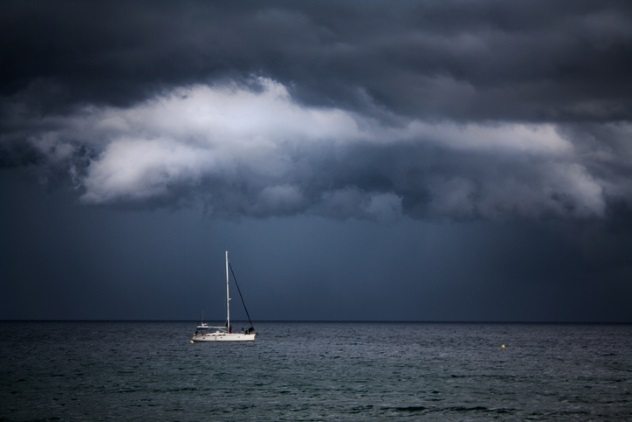
On May 27, 2012, Toakai Teitoi traveled from Maiana to Tarawa, both in the Republic of Kiribati, an island nation in the Pacific Ocean, to be sworn in as a police officer. After his swearing in, he watched a film about four Kiribati men who were lost at sea for six weeks. Little did he realize that he was about to experience a similar fate.
Teitoi decided to take a boat back to Maiana with his brother-in-law, Ielu Falaile. The trip should have only taken two hours. However, the men found themselves drifting helplessly at sea. They had drifted deep into the ocean and run out of fuel after stopping to fish and sleep for the night. The men had food on board but no water. This took its toll on them, and Falaile died on July 4. A day later, a heavy storm accompanied by severe rainfall allowed Teitoi to fill two 19-liter (5 gal) containers with water.
Teitoi was asleep during the afternoon of September 11 when he awoke to the sound of something banging on his boat. It was a shark, and it left when he went to investigate. That became his saving grace, as it allowed the crew of a nearby fishing boat to rescue him. Teitoi was taken aboard the fishing boat, which continued fishing for a few days since he was not in immediate danger. Teitoi believes he was saved by the shark.[10]
Read about more survivors of the sea’s fury on 10 Amazing Sea Survival Stories and Top 10 Sea Survivors.








